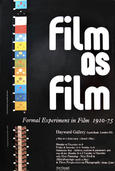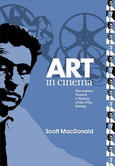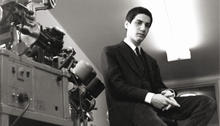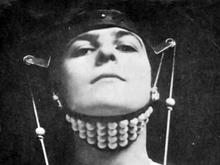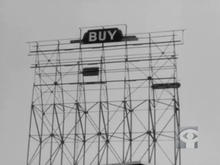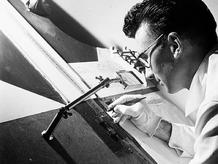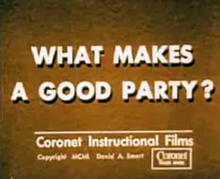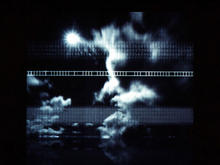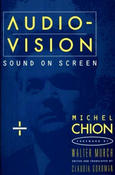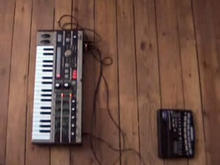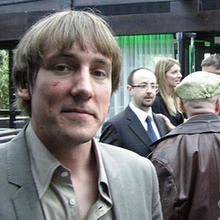21–87
(1964)by Arthur Lipsett is an abstract succession of unrelated views of the passing crowd. A commentary on a machine-dominated society, it is often cited as an influence on George Lucas's Star Wars and his conceptualization of 'The Force.'
Described as “A wry commentary on machine-dominated man, the man to whom nothing matters, who waits for chance to call his number” and as “fragments of a prophesy” 21–87 is filled with dystopian symbolism. Starting with an image of a skull that dissolves into the open titles, the film marries monotonous sounds of a mechanised assembly line to a short sequence featuring trapeze artists, an autopsy of a burnt corpse and a robot mime. The following sequence, in which a sermon is heard over shots of a robot arm performing a science experiment, suggests Arthur Lipsett’s conflicting fascinations with spirituality and science. Over the next nine minutes shots of city parks (including many of bird-watching and feeding), caged monkeys, shop windows, advertisements, circus performers, austere runway models, subway trains, skyscrapers, cautious elderly ladies and unaware children are introduced, repeated, slowed-down and re-combined. This leisurely montage is offset by several incisive audiovisual puns, as when Arthur Lipsett punctuates a discussion about the Book of Revelations with an image of billowing smoke, implying that the Bible = 'hot air'. This critique of Catholicism is continued in another piece of 'vertical montage' which pairs the image of a soldier aflame, stumbling and collapsing to the ground, with the voice of a preacher proclaiming that “the body of our lord Jesus Christ… was given for thee, preserve thy body and soul in everlasting life.”
At this point the film shifts temporal registers, with an accelerated montage of funhouse mirrors, wild dancing, heavy breathing, church music, circus elephants and horse racing. In the midst of all this Arthur Lipsett inserts a startling, poignant portrait sequence. In the film’s most direct public engagement, passers-by stare blankly at the camera or obscure their faces with newspaper as they emerge from an escalator. Shot from a low angle their bodies appear to rise from the ground, a metaphor for transcendence that harks back visually to the preacher’s statement about the body of Christ. Yet the dispassionate expressions of these commuters, framed in medium close-up, also convey Lipsett’s concern for an increasingly de-humanised civilisation, foreshadowing his embryonic agoraphobia and subsequent withdrawal from public life. 21–87 concludes with “a good-hearted friendly voice” repeating a line from earlier in the film: “And somebody walks up and you say your number is 21-87, isn’t it? Boy does that person really smile.” This snippet of dialogue, employed ironically, encapsulates Arthur Lipsett’s view of scientific rationality, which can be construed at the personal level as a coded response to his father’s detached, impersonal character.
Arthur Lipsett’s use of close-ups in 21–87 recalls Siegfried Kracauer’s seminal investigation and taxonomy of film language, Theory of Film (1960). Like the French film theorist André Bazin, Kracauer emphasised cinema’s capacity to accurately represent and record reality. Despite their significant differences, both he and Bazin advocated a form of documentary realism, bringing film and the quotidian into close, asymptotic association.
Kracauer’s socialist orientation placed special value on the close-up’s ability to magnify the refuse of everyday life. Similarly, Lipsett realised cinema’s potential to transform quotidian ugliness into a meaningful physiological experience. (...)
In his use of superimpositions, percussive tribal music, syncopated rhythms and a brisk 'single-framing' technique at the end of 21-87, Lipsett may have been attempting to create synesthesia through the intensification of image and sound. Citing Kracauer, Arthur Lipsett writes that, “Throughout this psychophysical reality, inner and outer events intermingle and fuse with each other – ‘I cannot tell whether I am seeing or hearing – I feel taste, and smell sound – it’s all one – I myself am the tone.’”.
Source: Senses of Cinema
